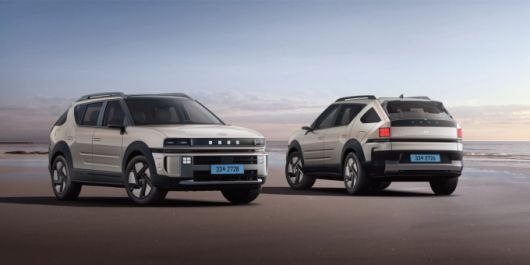Hyundai Motor’s all-new NEXO hydrogen fuel cell electric vehicle (FCEV), launched on June 10 with a maximum range of 720 km and prices starting at 76.44 million won, arrives at a time when South Korea’s hydrogen vehicle ecosystem is struggling to match infrastructure with ambitions.
While the technical improvements and commercial incentives offered by Hyundai are notable, systemic challenges—particularly in hydrogen production, refueling infrastructure, and long-term consumer confidence—continue to undercut the vehicle’s market viability.
The revamped NEXO delivers a notable 150 kW output and expands the previous single-trim offering into three configurations: Exclusive, Exclusive Special, and Prestige. Factoring in central and local subsidies of up to 37.5 million won, buyers could pay as little as 38.94 million won for the base model. Yet the lack of corresponding growth in hydrogen refueling infrastructure could inhibit adoption.
As of early 2025, South Korea operates fewer than 180 hydrogen refueling stations nationwide, with a large concentration in the capital region and only one or two operational stations in some provinces. Moreover, only a minority of these are equipped for liquid hydrogen refueling, a bottleneck that has stifled hydrogen uptake even as OEMs continue to develop passenger and commercial FCEVs. Hyundai’s offer to subsidize up to 55% of hydrogen charging costs for two years underscores the manufacturer’s awareness of ongoing operational cost concerns.
To offset depreciation risks—a persistent issue for FCEVs in a market dominated by BEVs—Hyundai is introducing a residual value guarantee program that covers up to 68% of the vehicle’s purchase price within three years. Additionally, Hyundai’s “Everycare” program promises cost-of-ownership management through maintenance subsidies, free annual inspections, and extended warranties on fuel cell components (10 years or 160,000 km).
These programs are aimed at reducing barriers to first-time hydrogen vehicle buyers, who may be hesitant given the uncertain resale market and nascent infrastructure. However, it remains unclear whether these incentives will meaningfully impact consumer behavior absent clear national targets for hydrogen station deployment.
Contrasting Policy and Market Realities
While Hyundai continues to present hydrogen as central to its “eco-friendly mobility innovation,” government policy has struggled to keep pace with commercialization timelines. According to the Ministry of Environment, only 2,400 NEXO vehicles were sold in 2023, a figure dwarfed by battery electric sales, which exceeded 200,000 units the same year. Projections from the Hydrogen Economy Committee had initially targeted 81,000 FCEVs on the road by 2025—an unlikely figure given the current infrastructure trajectory and modest consumer uptake.
A key issue lies in the cost and sourcing of hydrogen itself. South Korea’s hydrogen supply is predominantly derived from reforming natural gas, with limited availability of green or blue hydrogen. This not only inflates operational costs compared to BEVs but raises sustainability concerns, particularly as the carbon intensity of hydrogen remains high in most domestic production.
Design Innovation Meets Market Hesitation
Aesthetically, the NEXO’s updated “Art of Steel” design language marks a stylistic evolution, emphasizing material integrity and streamlined utility. Yet design will likely do little to address underlying logistical concerns. As Hyundai refines the passenger FCEV platform, analysts are increasingly questioning whether demand will ever scale without meaningful breakthroughs in hydrogen logistics, price parity with BEVs, and regulatory alignment.
Hyundai’s strategic bundling of subsidies, cost protections, and maintenance support may increase short-term traction among early adopters and fleet buyers.
Stay updated on the latest in energy! Follow us on LinkedIn, Facebook, and X for real-time news and insights. Don’t miss out on exclusive interviews and webinars—subscribe to our YouTube channel today! Join our community and be part of the conversation shaping the future of energy.
